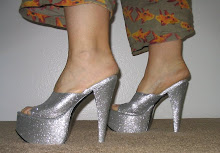Icelandic is hard! Damn!
Yes, another reason I haven’t had time to post many updates, in addition to baking bacon cakes and visiting Brooklyn, is that my "Teach Yourself Icelandic" kit finally arrived, and I’ve been trying to do just that on my lunch breaks.
Now, I don’t claim to be a linguist or to have a good ear, but I can make myself understood fairly well in a couple languages, and have always been able to pick up a phrase here and there when I travel even to places as linguistically distant as Turkey and Egypt.
But by Thor’s hammer, Icelandic is a different kettle of herring altogether.
It’s considered a "conservative" language because it hasn’t changed much for centuries. Only Faroese, an even more conservative language, is considered closer to Old Norse, for example, and modern Icelanders can read medieval sagas without difficulty.
The grammar strikes me as a simplified version of German, which is good, but the pronunciation reminds me of, uhm, drunk Vikings. Nothing is pronounced as it’s written, nothing has the clear, crisp delineation of syllables that I love about German, or at least Hochdeutsch, everything gets sort of slurred together and there are all kinds of gutteral, back of the throat sounds which have no English (or German, or Russian, or Spanish) equivalent.
Needless to say, I’m hooked. The very challenge of it intrigues me, even though you may wonder, as Mandilicious put it when she saw me with my book and CD one day, "why the hell do you want to learn that?"
I dunno. It’s difficult. It’s very Vikingy. And... it will help me rationalize another trip to Iceland. To you know... practice.
Sunday, September 2, 2007
Subscribe to:
Post Comments (Atom)



1 comment:
Does your book use the Intenational Phonetic Alphabet to denote the sounds? If so, there are web pages with sound files that might help. And if you book uses linguistic descriptions of where the sounds are made in the mouth, learning what a "plosive" is or where a velar sound is made, also helps. And definitely knowing the difference between "voiced" and "unvoiced" sounds is very helpful, because that usually affects how other sounds are made.
I haven't studied Old Norse yet, but the sound spectrum is probably close to Old English, so call me and we can go over the sounds. For instance, there are three sounds for "g" in OE -- one like the regular old "hard g" in "goat," another just like "y" in "you," and another we don't have in Present Day English which sounds like you're gargling (but not like the g's in the word "gargling"!). And "h" has three sounds, as well -- the sound in "house," a sound after "front vowels" (i, e) like the 'ch' in the German "nicht," made at the roof of the mouth, and another one made further back in the mouth when "h" comes after "back vowels" (u, o, a), like the 'ch" in "loch." Sound familiar?
I do know that the "j" in Icelandic is a "semi-vowel" a bit like "y" in English "you."
Post a Comment